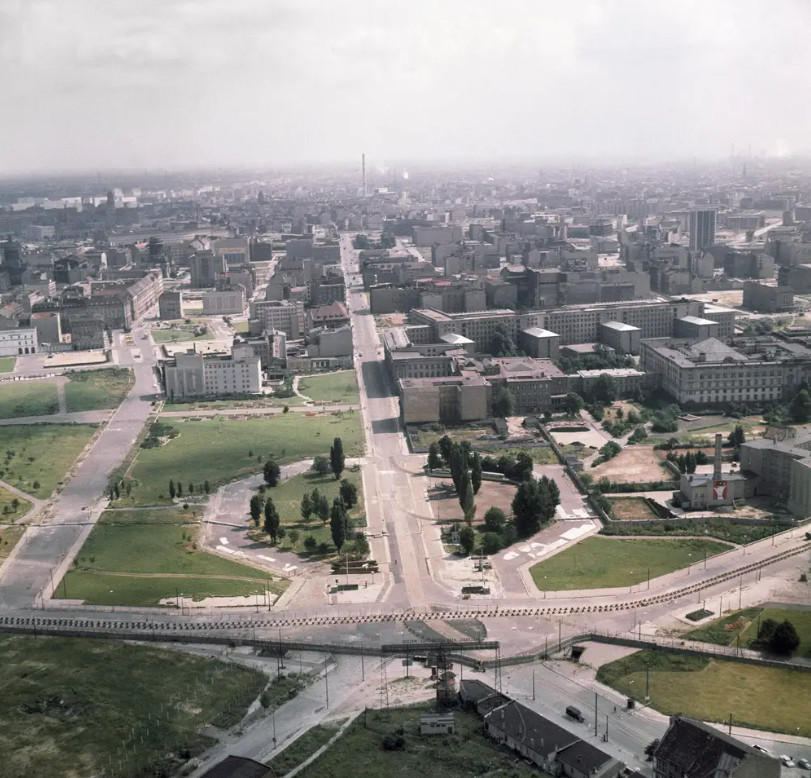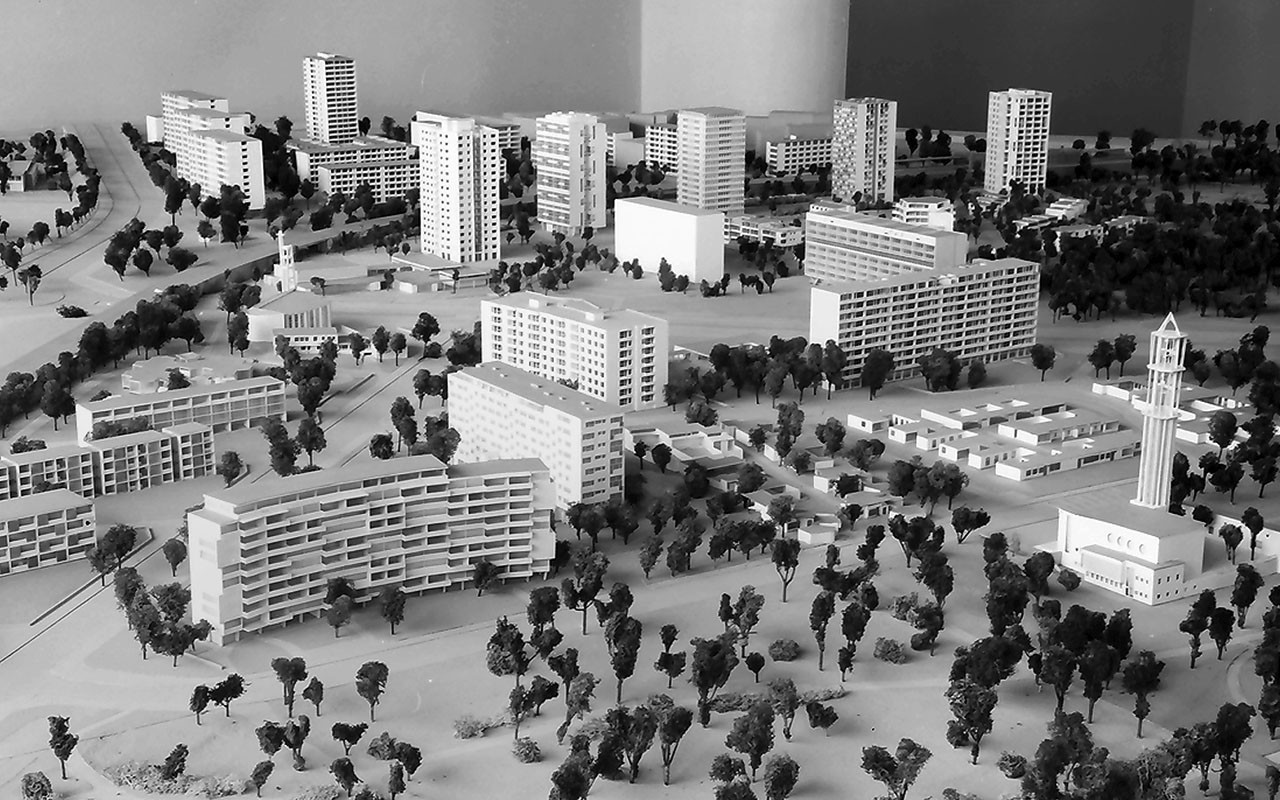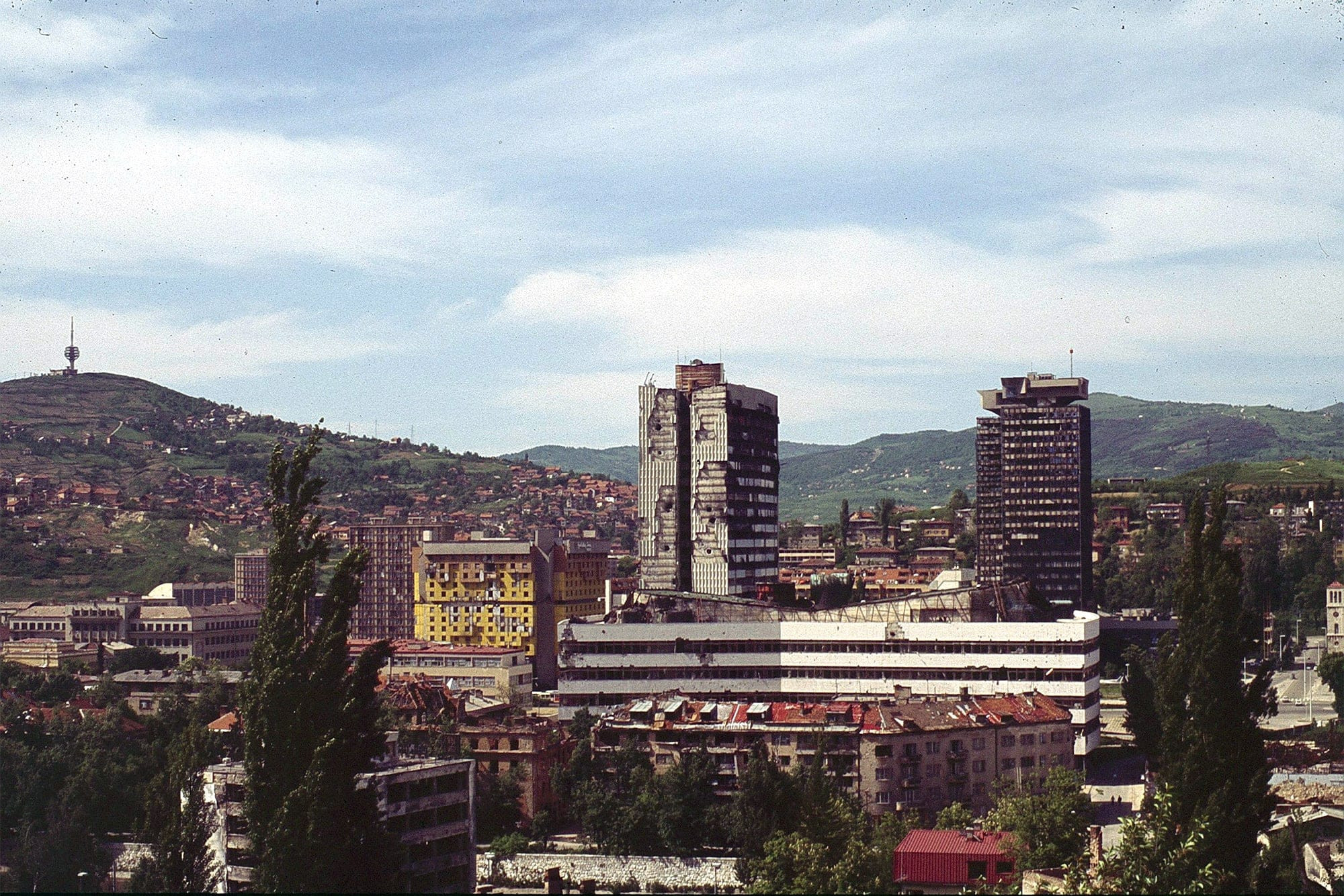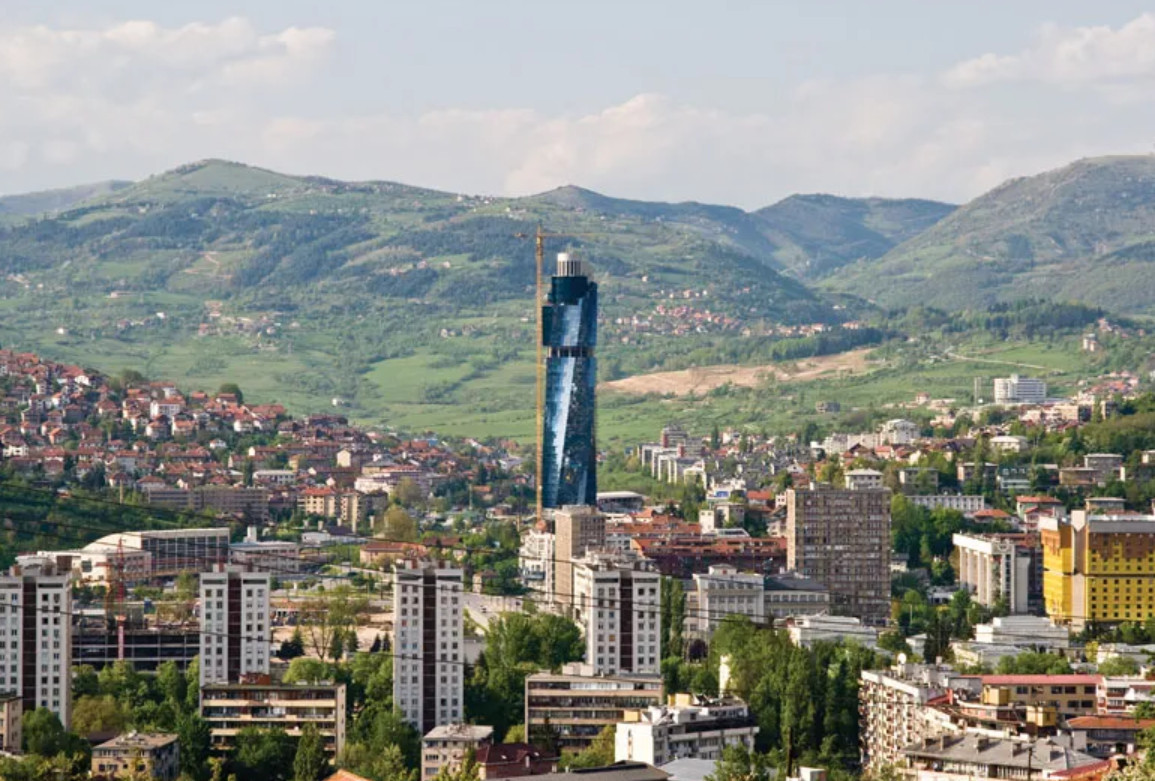Reconstruction is a complex and long-term process. In order to achieve its effectiveness, Ukraine should refer to international partners’ experience and avoid their mistakes, and implement successful cases.
Dr. Haris Piplas, an expert in the field of architecture, urban design, and planning from the Technical University of Zurich, spoke about the reconstruction experience of Berlin and Sarajevo, two similar cities that withstood complicated historical challenges and are still recovering after many years of chaos.
Historical Context of Berlin
In Dr. Haris Piplas’ opinion, the phrase that the best characterizes Berlin is: “Berlin is a city that is constantly becoming something, not only existing.” It is a city that has often changed and chaotically expanded over the years. Observing the architecture of Berlin, one can notice the changes that have happened in society and history over time. Each era left its unique trace there.
For example, despite the fact that the Concert House was built in 1821, it is still on Gendarmenmarkt and mostly unchanged. After World War II, the building was significantly damaged, but it was reconstructed to the pre-war form. Moreover, in some historical places, like Museum Island, there are bullet tracks left after hostilities.
However, it is not only one damaged place. There are still desolated squares in Berlin, and urban outline is similar to the Ukrainian one, which contains old historical, modern architecture and socialist realism designed buildings. That is why Berlin can be called an “urban laboratory” with a complex conglomerate of various forces, trends, and strategies.
Berlin is constantly undergoing changes, destruction, and reconstruction. Nevertheless, frequently changing approaches causes various urban phenomena and overlapping of various architectural styles.
According to German history, this country was divided for a long time. And only in 1871, its parts united into the German Empire, which later became the Weimar Republic and in 1933, formed the totalitarian Third Reich. It was followed by a bloody World War II, the division of Germany between the winners, the erection of the Berlin Wall, and finally in 1990, the long-awaited reunification of Germany the way we know it now.
It is hard to imagine how architects and developers of plans kept their balance between all these historical eras.
In the 1920s, there were plans to unite Berlin with its agglomeration, to build railways around, and thus to make the city a strong capital and an administrative center. The city area would expand from 66 to almost 900 km2, and the population would increase from 1.8 to 4 million people. The motivation for such a plan was to catch up with the development of other megacities on the continent, such as France and London. To implement the large-scale idea, the first urban design competition was convened, in which a number of architects participated.
How Berlin was reconstructed after WWII
Berlin was significantly damaged by bombarding and hostilities. The further reconstruction saved a number of historical buildings, but most of the blocks and districts were demolished.
The reasons of the large-scale demolition were the war and purposely destruction of architecture, historical memory, and to clear squares according to various types of reconstruction. For instance, Potsdam Square changed its form several times. After the war, it was completely demolished, in particular, to change the social climate after being under the ideological influence of the Nazis for more than a decade. After the Berlin Wall appeared, the square was right on the border between the FRG and GDR.
 The Potsdam Square in 1989 © Business Insider
The Potsdam Square in 1989 © Business Insider
The political border that became real changed Berlin forever. Eastern Berlin was under the influence of Soviet socialist realism. A political reconstruction project which was personally controlled by Stalin was launched. A number of buildings in the style of socialist classicism inherent in USSR were built on Stalinallee.
At the same time in West Berlin, there was another paradigm. In 1957, the International Construction Exhibition (Interbau) which focused on the reconstruction of the Hansaviertel district was held in the city. After the war, it was destroyed by 90%, so, it required immediate reconstruction. 49 architects, a third of whom were Germans, were involved. As the result, many buildings were built in the modern style, with many of them becoming social housing objects.
 Layout of the Hansaviertel district according to the plans of the Interbau exhibition © Hansaviertel Berlin
Layout of the Hansaviertel district according to the plans of the Interbau exhibition © Hansaviertel Berlin
West Berlin was reconstructed according to the Western lifestyle with freedom and the “American dream.” It influenced the aspect of the city which became full machine-centric and lacked inclusiveness.
In order to solve the problem of excessive motorization and artificial development of land, the international exhibition IBA was convened in West Berlin in 1979. It became clear that dozens of skyscrapers or modern apartments would destroy the whole spirit of the city. So, the architects adopted a strategy of “critical reconstruction” under which all new houses would organically coexist with the old ones. And according to the principle of “careful urban updating,” dozens of neglected houses which no one cared about before were integrated in a new way.
In the 1980s, people finally realized that reconstruction should not be a vertical-centralized process, but dynamic and lively, based on the real state of the city.
Reconstruction continues to this day with the mistakes corrected to bring the city its historical spirit back.
The Tragic History of Sarajevo
Sarajevo is the capital of Bosnia and Herzegovina, a picturesque place in the Balkans. Since ancient times, various empires and countries claimed this region, and it definitely influenced the Bosnian capital form.
In Sarajevo, Christians and Muslims lived together who spoke different languages, had different cultures and traditions. It became the background for the religious conflict development, and after being part of Yugoslavia for years, the threat of interethnic disputes increased. In the end, hostilities between Serbs, Bosniaks, and Croats took place because of the accumulated problems.
From 1992 to 1996, Sarajevo was under siege by the Serbs during the Bosnian war. It is a record period of siege in history. This period brought thousands of deaths and destruction. Due to a lack of food, city yards were turned into vegetable gardens, and Olympic stadiums turned into mass graves. It was a political act of the Serbs to destroy Sarajevo inch by inch, rather than a military necessity.
 Sarajevo under siege © Institute for War and Piece Reporting
Sarajevo under siege © Institute for War and Piece Reporting
The power of solidary, the aspiration to survive and defend evil, made Bosnians stronger. They withstood the challenge of the war, but unfortunately, lost a unique chance to revitalize the city.
The key problem was the lack of an effective strategy, a plan with a clear division of responsibilities, and a coordination of international organizations. In fact, the reconstruction was carried out according to the following principle: partners provided resources and the city authorities reconstructed objects without a well-grounded analysis of how it could influence the future of Sarajevo.
As the result, the city is divided culturally and socially into two parts — Sarajevo and Eastern Sarajevo. The latter is actually an urban province populated by Bosnian Serbs who use the Cyrillic alphabet and go to the Christian church. And in the former, it’s vice versa.
Now the city is fragmented and built up thoughtlessly, and its citizens almost do not keep in touch with each other. Urbanists and architects need to bring the city to life, update it, use neglected squares and incorrectly planned public spaces for new spaces that will be in useful for Sarajevo.

Contemporary view of Sarajevo © Encyclopedia Britannica
How to conduct quality reconstruction of Ukraine?
“Thirty years later you will consider the post-war reconstruction to be a lost chance,” says Haris Piplas and calls for attention to the planning of the reconstruction process.
- Ukraine should use its moment for reconstruction because every crisis is a chance for Therefore, the first step should be to create a platform that will coordinate all available initiatives. It is high time to establish cooperation with various partners and create the base for specialists in various fields in Ukraine. It is important to understand that international partners will not reconstruct our cities on their own, so, it is for Ukrainians to decide.
- The destroyed Ukrainian cities should be mturned into multifunctional centers of life again and return citizens after several crisis situations, both Covid and the war. In particular, to achieve an effective result, the fair-paid architectural competitions with competitive conditions and admission of all willing specialists must be held.
- Moreover, reconstruction is not only about planning and building, but also consideration of social opinion and prediction of future problems. And Ukrainian cities must be ready for such challenges!
The whole story can be listened to at the link.
Read reconstruction stories of Coventry, Warsaw, Berlin, Hiroshima, Le Havre, Samarinda, villages in the Netherlands, Rotterdam, Kyiv, Budapest, Gdańsk, Beirut.